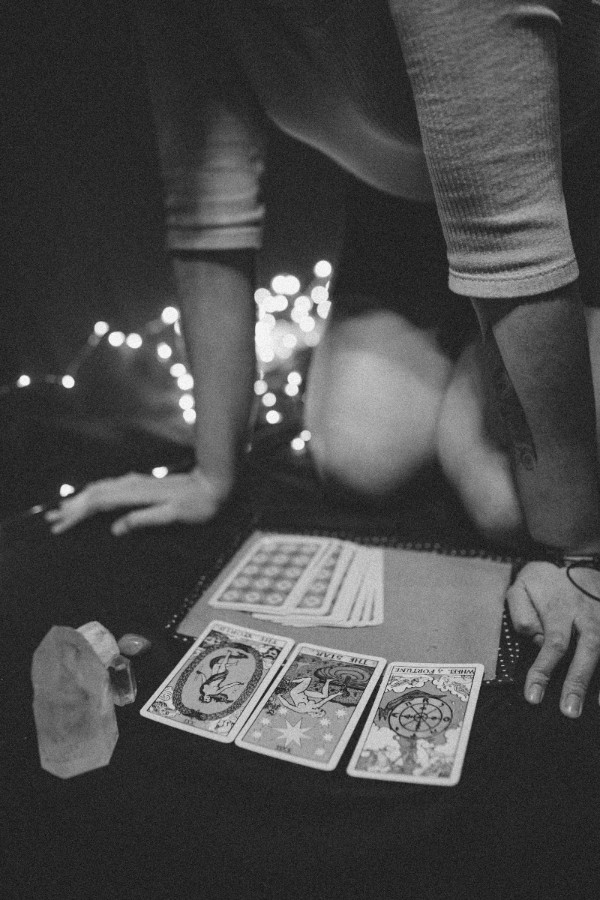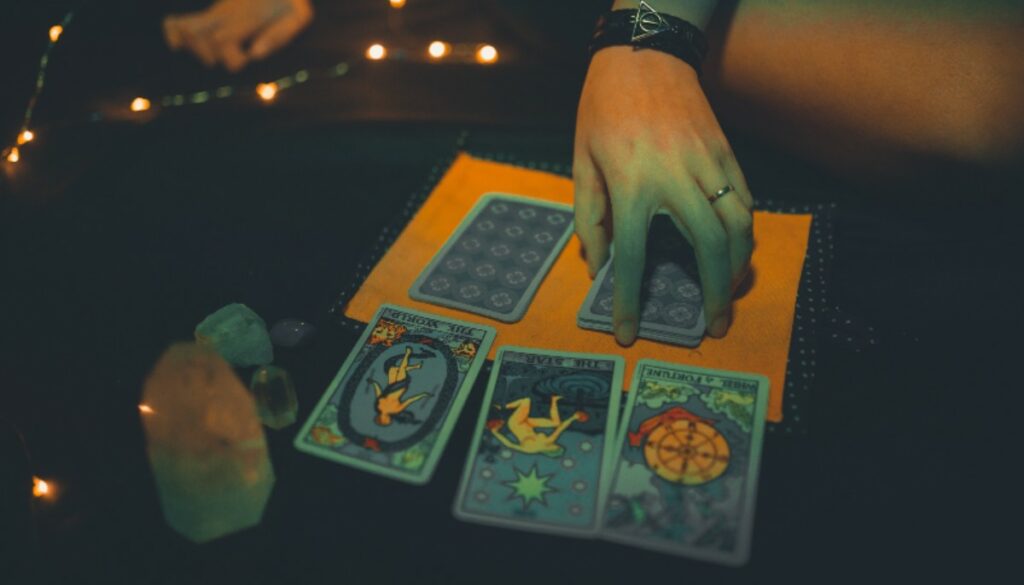If you’re anything like me, you’ve always been drawn to the idea of tarot cards. I’m not sure what did it for me at first. A scene in a movie or a book, I suppose. I loved the mystique of them, how they looked spread out on a table, and the idea of accessing some ancient or hidden knowledge through their beautiful imagery.
But for years I was too intimidated to actually learn about them. I thought it was something that was beyond me. Then ten years ago I gave in, and never looked back.
Now, tarot is more popular than ever. You can find tarot decks in every art style and theme under the sun. And there are a ton of books, podcasts, and courses available to help the beginner reader get up to speed.
If you’re someone who’s interested in tarot or oracle cards but hasn’t taken the plunge yet, here are five reasons you should get started.
1. Tarot is for Everyone
Okay, first thing’s first. There’s a long-standing belief among many people that you should never buy your own first tarot deck. That in order to become a “real” reader, your first deck must be gifted to you by someone else–specifically another “real” reader.
Thankfully, people have begun to see this “rule” for what it is: some serious gatekeeping BS.
Now, of course, you’ll find people who still stand by this myth. After all, people like to feel like they’re “chosen” or “special.” But the truth is, tarot is an ancient practice, and isn’t “owned” by anyone.
This is not to say that professional readers have no place–dear god(dess) in heaven, they absolutely do. There are people on this earth whose calling is to study this complex and beautiful system of symbols for a lifetime, and who can offer so much wisdom through a professional reading. If you’re brand new to tarot, in fact, I would suggest starting here if you’re able.
But learning how to read the cards for yourself can be a beautiful addition to your own spiritual journey. And no one can keep that from you if it’s something you’re interested in.
2. Reading Can Help You Tap into Your Intuition

You’ll notice that I referred to tarot as something that can be a part of your spiritual journey. I whole-heartedly believe that. But you don’t have to believe in angels, or spirit guides, or any sort of deity in order to incorporate the practice into your life. You absolutely can, and many do, but it’s not a requirement.
I prefer to think of tarot cards — which are made up of patterns, symbols, and archetypes — as imagery that helps us tap into our unconscious minds. Almost like a Rorschach inkblot test.
The lessons in these cards are, at their most basic, platitudes. Like those you’ll find in horoscopes, spiritual texts, affirmations, or hell, even fortune cookies. They’re universal truths that can apply to anyone, and your unconscious or higher self can make sense of them through the context of your own situation.
3. It Can Also Offer Clarity
Knowing this, you can use the cards in order to gain clarity or help make decisions, because what you’re doing is accessing the truth that’s already inside of you.
To use another seriously boring analogy, think of a pro-con list for a minute. You write out all the reasons you know you should do something, and all the reasons you know you shouldn’t, then compare the two columns. This helps you suss out the decision you’ve already made, but weren’t able to reach because of all the noise inside your own head.
The cards can be read in much the same way. Take this spread, for instance, from tarot mentor Sarah M. Chappell. Center yourself, and clear your mind to the best you are able. Shuffle your deck, and lay out three cards in front of you. Assign them the following meanings:
- What do I think is going on?
- What is actually going on?
- What, if anything, should I do about it?
Look at the cards carefully, and see what sort of intuitive hits or breakthroughs you get visually. What do the imagery and the colors bring to mind? How do those things play into your current situation?
Then go to the traditional interpretations, usually found in a guidebook but there are plenty online. What do they add to your earlier observations? And what sort of clarity do they offer?
The more you interact with the cards, the more easily you’ll be able to apply their lessons or insight to the situations at hand.
4. Each Card Offers its Own Medicine

True story: tarot scares some people. It just does. Blame Hollywood, blame the stories you heard as a kid, blame whatever you want.
Depending on the deck you choose, some of the imagery can be intense. And yes, there are cards that at first glance, seem dark as hell. But I truly believe that every card in the tarot deck has medicine to offer–even the not-so-warm and fuzzy ones.
The thing is, the interpretations of tarot cards are metaphorical. Yes, there is a Death card, but it rarely symbolizes physical death. Instead, it can be seen as something in your life that’s run its course, and needs to be laid to rest.
The Devil card doesn’t symbolize the need for an exorcism–it typically refers to an addiction or destructive behavior that’s been holding you back in some way. And The Hanged Man isn’t about suicide. It’s a man hanging upside down from his foot–very much alive–and speaks to the need to take on a different perspective or surrender to a situation you’ve fought for too long.
Not everyone reads cards in the same way. That’s part of the fun. But when using tarot as a part of your spiritual or self-care practice, there is wisdom to be found in each and every card.
That said, if tarot still feels dark, scary, or intense…
5. Oracle Cards Are a Gentler Alternative
Tarot decks have a pretty rigid standard structure. They’re made up of 78 cards (divided into the minor arcana, which is similar to a deck of playing cards, and the major arcana, the 22-card “Fool’s Journey”) and rarely deviate from that number. They have traditional interpretations that can take a while to learn. And, as we discussed, some of the themes can be a bit intense.
Oracle cards, on the other hand, have a much looser, more free-flowing structure. They often have their meanings printed directly on the card. And you can seriously find one that represents any hobby, interest, or art style you’re drawn to.
They can also seem gentler in readings than tarot decks do. Tarot can sometimes give you the “hard truth,” while oracle cards might sugarcoat things for you. A little more, “take care in this area of your life,” and a little less, “you know what to do, get your head out of your a**.”
And don’t think you need to choose one or the other. Most people I know who’ve begun reading have collected several tarot and oracle decks, myself included.
So there you have it. I hope this has piqued your interest in these amazing spiritual tools, and emboldened you to go out and buy your first deck. Don’t sit around and wait for someone to drop it in your lap. Your higher self is calling.













